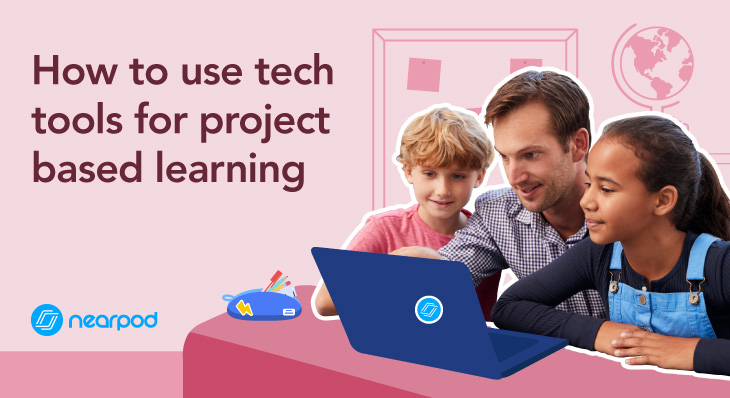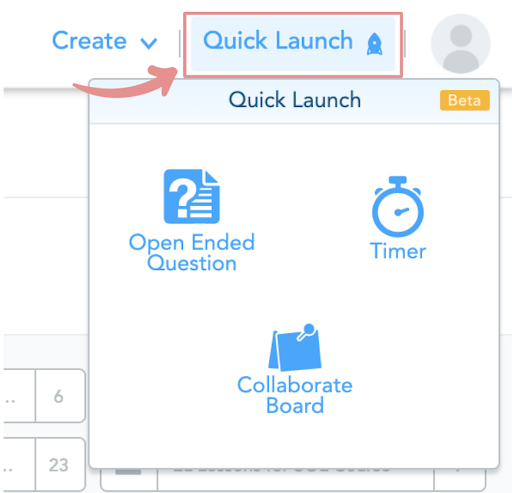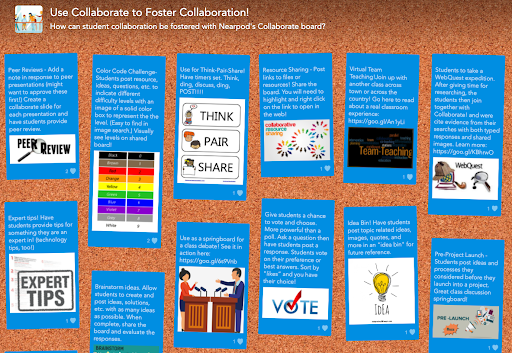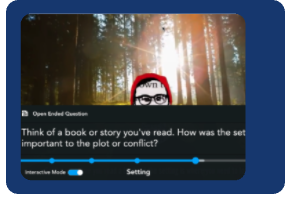
How to use tech tools for project based learning
Project based learning, or PBL, is an instructional approach where students actively think through challenges and explore real problem solving opportunities. Consider not just having math class, but creating a classroom store that makes a profit for a community or global relations initiative. Think about not just learning the plant cycle, but creating a school garden that donates food and collects shared pictures of the recipients.
Hopefully, the days of students sitting in rows and columns listening to teachers’ lectures are long gone. We have evolved from a place of expecting learners to reach understanding through mere repetition and are replacing it with student-centered connections that lead to critical thinking that might even solve local and global issues. Project based learning is an educational approach to consider and you could use Nearpod educational tech resources to help!
What is Project Based Learning (PBL)?
Project based learning is a type of approach, encouraged by early educator and theorist John Dewey, that covers more than one discipline/subject-area and is student-led inquiry with the teacher in a guide or coach role. This kind of teaching and learning actively answers the “why are we learning this” question that many students of the past may have had. Teachers can use tech tools for project based learning by accessing the Nearpod library for content across subject areas, standards, and grade levels. Students work through critical thinking steps in project based learning to research ideas and discover solutions for solving real-world issues in project based learning using educational technology. PBL presents a statement of “this is an issue or problem, and we get a chance to work together to consider how we might solve it or address it!”
Why is PBL important?
Especially in today’s times of global connections and world issues reaching inside homes from afar, project based learning is of benefit to teachers and students. It was Albert Einstein who said “we can’t solve problems by using the same kind of thinking we used when we created them.” Well, PBL is not merely about finding answers. The thoughtful journey learners take using their own thoughts and expressions of creativity resonate to encourage different ways of thinking and different ways to demonstrate understanding as they explore personal and shared connections. Lesson content turns into their own content to be shared out to the world around them. Project based learning concentrates on students being more closely connected with why they are learning something and how they can make an impact using what they understand, discover, and feel about topics. Personal connections, emotions and interests are key components in PBL. Being able to communicate ideas and questions are critical to developing interpersonal skills essential for teamwork in project based learning. Using Nearpod as an edtech tool helps to support project based learning in multiple ways! Learners have the opportunity to work with and communicate with others using media and formats that they choose. Critical thinking, collaboration and communication are necessary for successful project based learning projects. Nearpod is a great educational tech resource that can support every step!
Tech tools and ideas for PBL
Take a look at some of the activities and formative assessment tools educators might use in project based learning through Nearpod:
1. Share impromptu text and images using the Nearpod Whiteboard feature or Quick Launch activities during live sessions as ideas flow from student conversations noting student engagement and interactions. During PBL discussions, teachers can toggle between having a Live or Student-Paced mode sessions for communication to move from whole group to individual work or collaborative teams. Here are some ideas to use for different subjects:
- Math: Create checklists for students to break down tasks and convert it into a Draw It slide for them to fill out.
- Science: Create an Open-Ended Question in Quick Launch to check in on students’ understanding and inquire along the way while they work in groups.
2. Experience a shared space of virtual post-its of images or text on the Nearpod Collaborate Board with whole group, small groups or teams in Live or Student-Paced mode sessions for learners to express their thoughts and ideas about their project based learning throughout the process. This is an excellent tool that can be revisited throughout and as a sharing piece after the project concludes. Students and teachers can easily post images and text quickly in one place to capture a visual board of thoughts and ideas throughout the project based learning process. The team could even use the board as an educational technology tool for teach-back moments to peers. Here are some ideas to use for different subjects:
- ELA: Have students use Google Safe Search on a Collaborate Board activity to find images of relevant vocabulary to the project.
- Social Studies: Have students use Google Safe Search on a Collaborate Board activity to find images of important people, places and things to share on the board related to the topic.
3. Show current events and diverse stories with Nearpod’s Interactive Videos for research and informational use for learners. There are nonfiction and creative fiction options for students to learn more about their topics. Consider accessing Flocabulary where the video library is wrapped up in rhythms and rhymes, songs and stories for learners to capture information in a way that surely is not boring! Here are some ideas to use for different subjects:
- ELA: Have students watch a nonfiction Interactive Video and ask them to list facts and details on an Open-Ended Question.
- Social Studies: Consider having students see examples of videos for them to use as demonstrations of how they might create their own.
4. Having students participate in a gamified activity, such Nearpod’s Time to Climb, for information review or a Poll activity to consider their thoughts about essential questions that they have discovered answers and ideas for along the way is an easy win for teachers and students! Communication is an important part of project based learning as students share their voice and get to explore their choices through the learning process. Communication is an essential element of project based learning. Here are some ideas to use for different subjects:
- Check levels of understanding across any subject area using text or image questions.
- Bring connection to what the students are learning by asking them to share their opinion or to check facts known about topics or people.
Coach your students through PBL using project benchmarks that complement the educational journey using Nearpod as your educational technology tool of choice! Nearpod is an excellent resource to access content and activities flexible to your needs as an educator and to your students’ needs as 21st century learners.
Here is a general example of how you might plan to use Nearpod for project based learning:
1. Access diverse perspectives within the Nearpod and Flocabulary video libraries to expand knowledge and make connections. Check student opinions and understanding using Nearpod interactive videos.
2. Use Nearpod polls or quizzes for survey questions!
3. Compare and contrast viewpoints along the way and around the globe using Virtual Reality (VR) Field Trips to see people, places and things to consider. Guide students through looking at life differently with interactive 3D views in the classroom.
4. Talk about current events and share perspectives using the Collaborate Board using words and images to show what they have discovered.
5. Guide students through using art as an expression by encouraging student-created components of Nearpod to teach-back and present to others their project based learning discovery points.
Be encouraged to get started and give it a try! Motivate your students through project based learning to plan a vacation, create a business or change the world one project at a time! Save a few trees by using less worksheets. Use Nearpod as an online educational tech resource flexible, suitable and accessible with everything at your fingertips for your PBL support.
Interested in reading more about this topic? Check out this blog post: Using Nearpod to support differentiated instruction

Tech-savvy international educator, Nearpod PioNear, and lover of literacy encouraged by sharing ideas and strategy for the profession that teaches all other professions.











